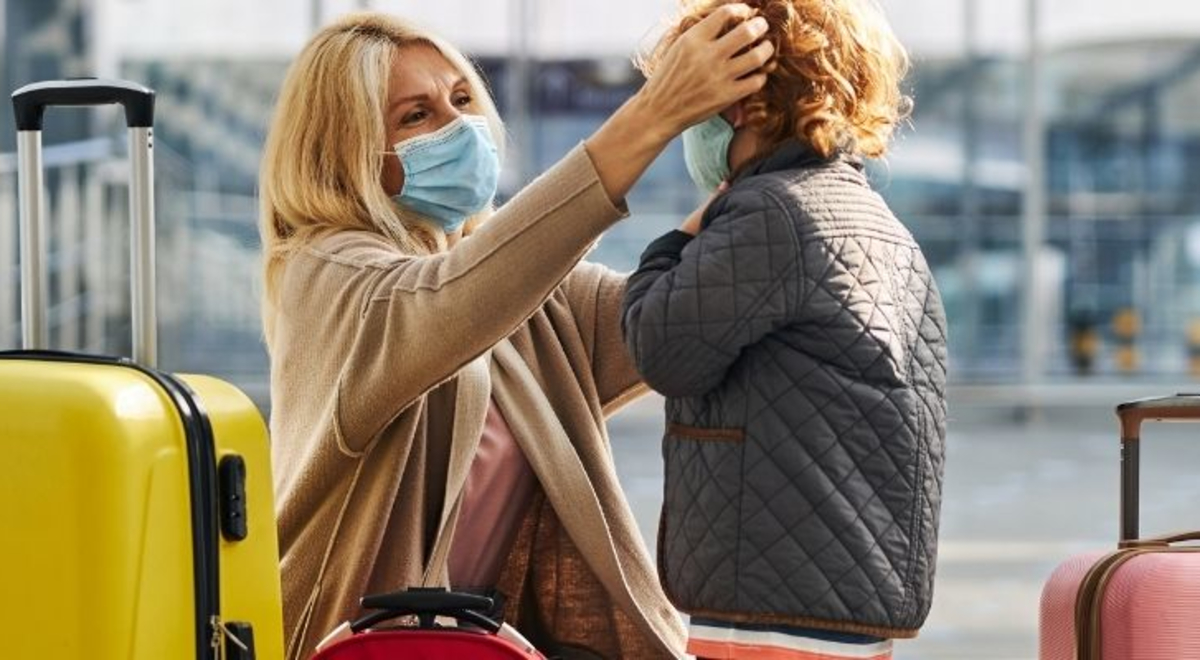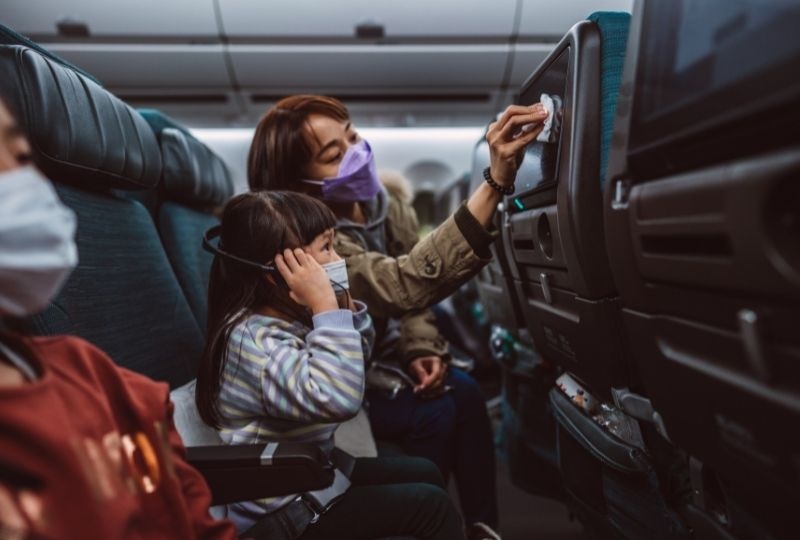
5.91min read
Published 1 December 2021
Let’s face it, after the last year and a half, no one needs a holiday more than parents. Yet as enticing as an escape may be, the new world of travel might seem like a minefield. That’s where we come in, to help you navigate travelling with kids during COVID, whether domestically or overseas. Australia’s international travel ban has lifted, however there are plenty of rules and requirements that still make travel complicated, so we’ve pulled together all the information you need to get your family ready to travel safely again.
Keep reading to find out:
• Is it safe to travel with kids during COVID?
• Australia’s Travel Restrictions – What’s Changed?
• Travelling Abroad? Be Sure To Check Destination Travel Rules
• Testing Requirements
• Helpful Tips For Travelling With Kids During COVID
• Additional Australian Travel And Health Resources
Is It Safe To Travel With Kids During COVID?
Over the past two years, the travel industry has been forced to adapt to new regulations put in place to keep travellers safe, and you’ll definitely notice some changes the next time you and your family arrive at an airport, board a flight or check in to a hotel.
When travelling within Australia or internationally, you’ll likely be required to wear masks both in the airport and on board your flight. Children under 12 will generally be exempt, but for children 12 years and older, face masks will normally be required. Qantas and Virgin Australia, for example, require all children 12 years and over to wear face masks while on board.

To keep everyone safe, travellers are being encouraged to check in online and to use self-service kiosks wherever possible to limit unnecessary contact in airports. Most planes have now been fitted with hospital-grade HEPA air filtration systems and hotels have implemented more rigorous cleaning protocols to keep you and your family safe on your travels.
There are other things you can do to keep yourself and your family safe while travelling, including social distancing wherever possible, regularly washing your hands and using hand sanitiser, wearing a mask in public, avoiding contact with people who are unwell and staying home if you have COVID-19 symptoms.
Individual airports, airlines, hotels, tour operators and cruise lines are all responsible for putting their own safety measures in place, so procedures and protocols will vary between suppliers.
Australia's Travel Restrictions – What's Changed?
Leaving Australia
On 1 November, the Australian Government lifted the international travel ban, meaning that Australians can now leave the country without first applying for a travel exemption. But just because international travel is back on the cards doesn’t mean we're restriction-free, so here are some things to know before heading for the airport.
You need to be fully vaccinated to leave Australia without an exemption, and will be required to show your International COVID-19 Vaccination Certificate (ICVC) at the border. If you are not fully vaccinated, and are not medically exempt from receiving a COVID-19 vaccine, you will still need to apply for a travel exemption to leave Australia.

Children under 12 and people unable to get vaccinated due to medical reasons are allowed to travel internationally without applying for a travel exemption. However, if your child is aged 12 or older they will need to be fully vaccinated and show their vaccination certificate to travel internationally, following the same requirements as travelling adults. For more information, see the Australian Government’s website.
To meet Australia’s definition of being fully vaccinated seven days need to have passed since you received your second (or final) vaccine dose.
Returning to Australia
When returning to Australia, all travellers over 12 years and three months old will need to complete the Australia Travel Declaration (ATD). This needs to be done at least 72 hours before departure.
You will also need to show a negative PCR test result when arriving back in Australia, taken within 72 hours of your scheduled flight departure time. This testing requirement applies to children five years and older. If your child is under five they are exempt and won’t need to get tested.
If you or your children (aged 12 and older) are unvaccinated, you will likely have to quarantine when returning to Australia, so make sure you factor this into your travel plans and budget. Quarantine requirements are set at a state level, so you will need to check the state government rules to determine what quarantine you may need to complete.
Children between the ages of 12 and 17 who are not fully vaccinated may qualify for reduced quarantine times if they are travelling with fully vaccinated parents or guardians and arriving in New South Wales, Victoria or the ACT. Check your state’s entry requirements for more information.
Travel requirements for Australians are changing often. Our Current travel restrictions page and international travel restrictions map can help you find the right resources to get organised for your trip.
Travelling Abroad? Be Sure To Check Destination Travel Rules
It’s important to remember that just because you’re now allowed to leave Australia, this does not guarantee you entry into any other country, so it’s crucial that you carefully check your destination’s rules and restrictions, particularly if you’re travelling with children.
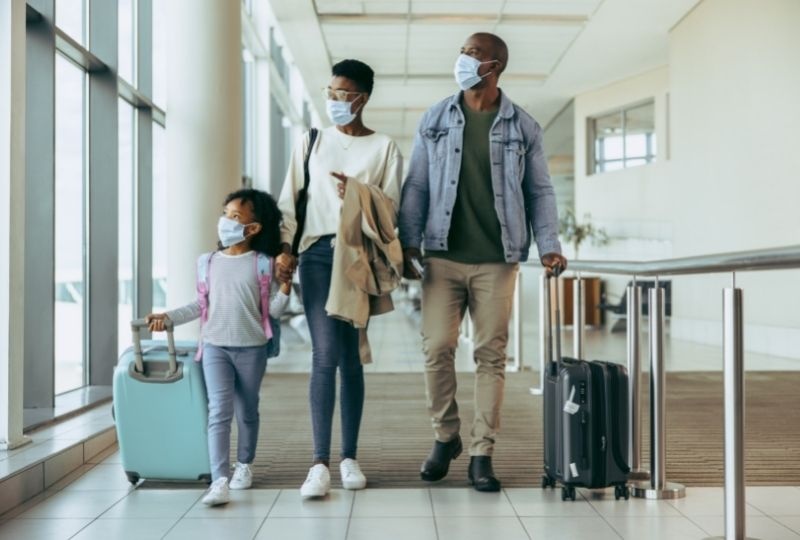
Just as individual airlines may have varying safety measures in place, each individual country is responsible for determining the entry requirements that travellers will need to meet.
Here are three of the top destinations for Australian travellers and their current entry requirements for families.
Singapore
Singapore’s Vaccinated Travel Lane (VTL) currently allows certain travellers to enter the country without having to quarantine, provided they meet specific testing, vaccination and travel requirements.
To find out if you are eligible to enter Singapore under the VTL and what requirements you and your family will need to meet, visit Singapore’s Safe Travel website and Vaccinated Travel Lane Checklist. Our international travel restrictions map can also help.
Travellers will likely need to show that they have taken out a travel insurance policy with a minimum coverage of S$30,000, including COVID-19 cover.
At the time of writing, children aged 12 and under may not need to be fully vaccinated to enter Singapore quarantine-free and children aged two and under may be exempt from testing requirements. For the most up to date information, check Singapore’s Safe Travel website.
Fiji
From 1 December, 2021 certain travellers can visit Fiji without having to quarantine, provided they meet specific testing, vaccination and travel requirements.
To find out if you are eligible to enter Fiji and what requirements you and your family will need to meet, visit Travelling to Fiji and our international travel restrictions map.
At the time of writing, children under 18 may not have to be fully vaccinated as long as they are travelling with fully vaccinated parents or guardians and children under 12 may not need to show a negative PCR test result upon arrival. For the most up to date information, check the Travelling to Fiji website.
USA
Now that Australia’s international travel ban has lifted, travellers may be able to visit the USA provided they meet specific testing, vaccination and travel requirements.
To find out if you are eligible to enter the USA and what requirements you and your family will need to meet, visit The Centers for Disease Control and Prevention (CDC) website and our international travel restrictions map.
You may need a visa to travel to the USA, so make sure you check the USA Government’s Department of State website in advance.
At the time of writing, children under two may not need to show a negative COVID-19 test and children under 18 may not need to be fully vaccinated against COVID-19 to travel to the USA. For the most up to date information, check the CDC website.
Testing Requirements
COVID-19 testing is now a necessary part of travel. With so many different requirements, it can be hard to know exactly what tests you need and when in order to travel safely.
While testing requirements will vary depending on your destination, airline and age, a PCR or RT-PCR test will usually be required before you leave Australia, and again before you return.
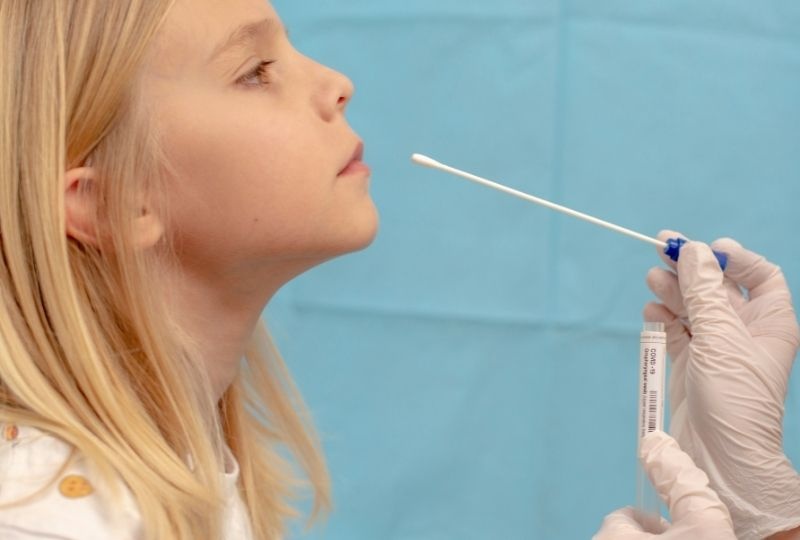
PCR (Polymerase Chain Reaction) and RT-PCR testing is not the same as rapid antigen testing, and will typically require you to make a booking and pay a fee. For RT-PCR testing in Australia, we recommend Healius Pathology. Currently, a single Real Time RT-PCR test through Healius Pathology costs $150, so make sure you factor this into your holiday budget.
Requirements for different destinations will vary, and different countries have different testing requirements and exemptions in place for children so make sure you check the relevant government websites before travelling.
When returning to Australia, you will need to provide a negative PCR test result, taken within 72 hours of your scheduled departure time. If you’re travelling with children under five, they are exempt and will not be required to show a negative PCR test result upon arrival in Australia.
Additional requirements may be in place for unvaccinated children, depending on the state of arrival. Some states may mandate additional PCR testing, while others may also require unvaccinated travellers to undergo home or hotel quarantine. See the Australian Government’s Department of Health website for more information, and check the relevant state government’s website.
Helpful Tips For Travelling With Kids During COVID
Travelling with kids can be challenging at the best of times, but it is possible with just a little extra planning! Here are some other things to think about when planning your next family holiday.
• Wait times are likely to be longer than they used to be, so make sure to pack lots of distractions! Think colouring books, iPads, headphones, toys and snacks.
• Don’t forget to pack extra face masks, wipes and hand sanitiser just in case.
• Make sure you purchase travel insurance that includes COVID-19 cover before you go to protect you and your family if anything goes wrong.
• Check the travel requirements for your destination (and any transit points) before you leave to avoid any unnecessary stress or delays.
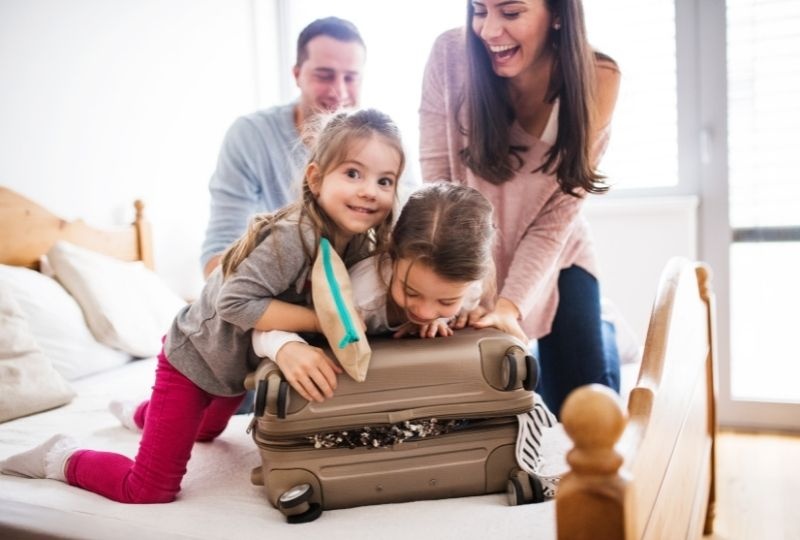
For more helpful tips, see Travel with children and What To Pack For A Holiday With Kids.
Additional Australian Travel And Health Resources
Stop Looking, Start Booking
Site quick links
Help & support
Flight Centre acknowledges the Traditional Custodians of Country throughout Australia.
© Flight Centre Travel Group Limited. ATIA Accreditation No. A10412.
*Travel restrictions & conditions apply. Review any specific conditions stated and our general terms at Terms and Conditions. Prices & taxes are correct as at the date of publication & are subject to availability and change without notice. Prices quoted are on sale until the dates specified unless otherwise stated or sold out prior. Prices are per person.

